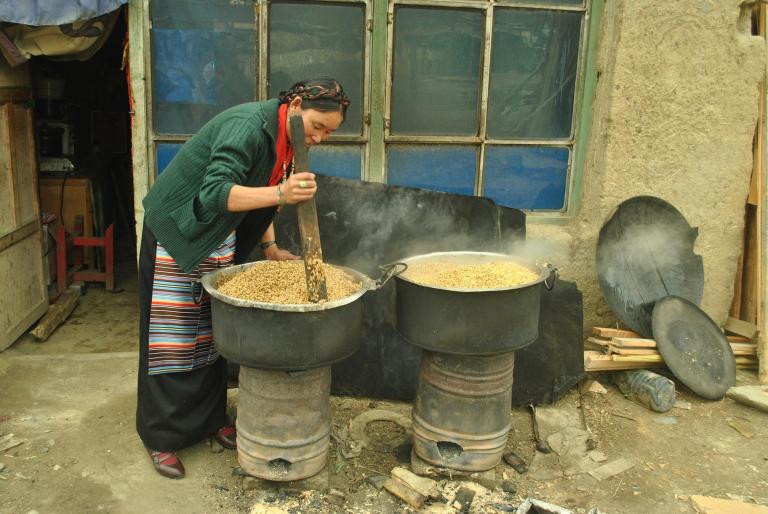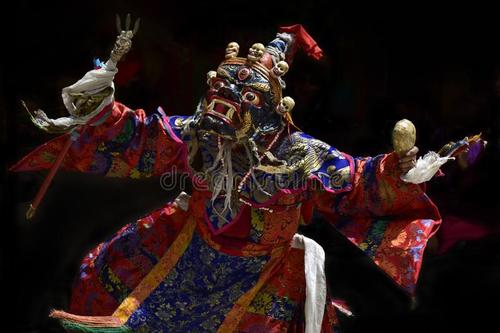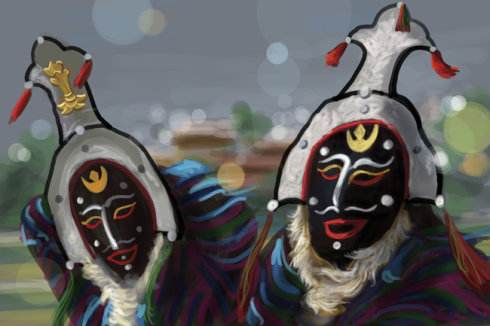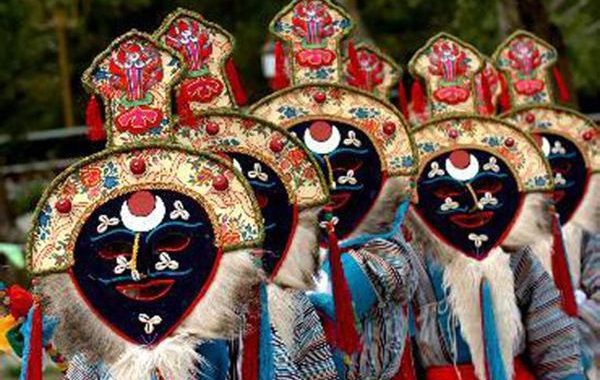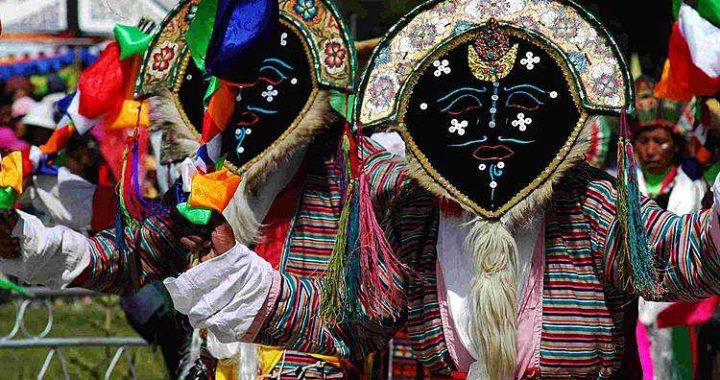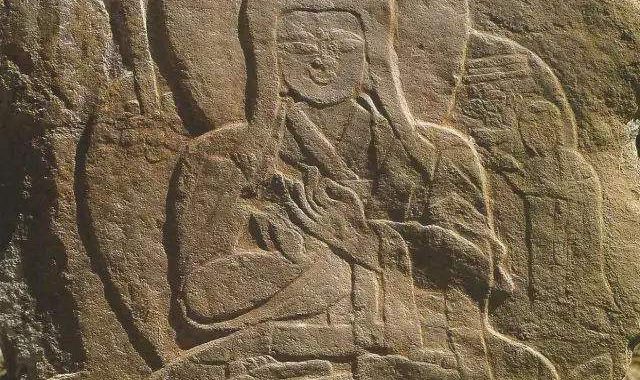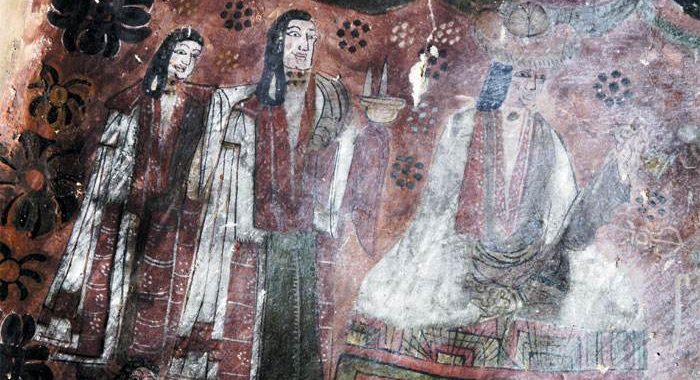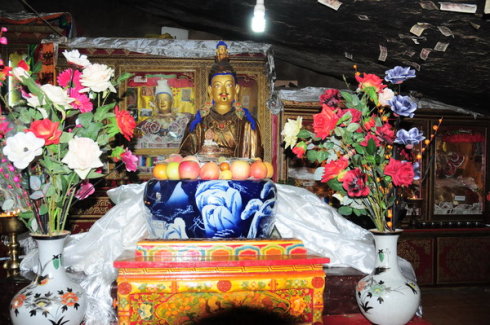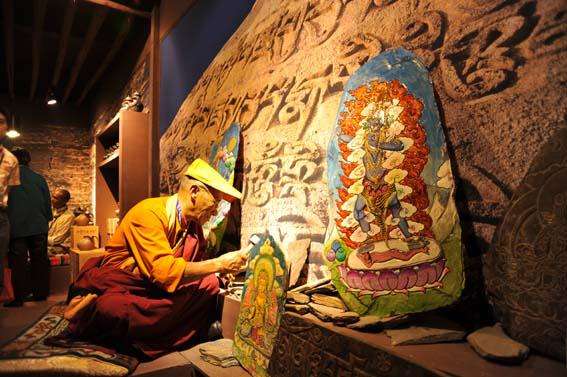Life with Butter and zanba
5 min readPeople living on the Tibet Plateau retain their traditional way of life, they wear robes of pulu wool, eat zanba roasted highland barley flour, drink butter tea and highland barley wine and live in Tibetan-style houses. Many changes are taking place in some towns in the plateau. However, buttered tea is still the everyday drink and zanba is still a popular food. Let’s start with butter and zanba.

Butter is the essence of Tibetan food and the daily necessity of Tibetans.
Normally, it is the fat extracted from both cow and goat’s milk; however, yak butter is the favorite of Tibetan people. Produced in summer and autumn, it is characterized by an initial bright yellow color(fading to faint yellow in winter), sweetness and good taste. Goat butter is white and bright, but its nutritional value and taste are slightly inferior to yak butter. Butter containing various kinds of vitamins can nourish the stomach, and has very high nutritional values. It can supplement the various needs of people in the Tibetan areas with a relatively simple dietary structure.
The wide usages and functions of butter in Tibetan areas are simpl unimaginable unless you go there to see for yourself.
To make buttered tea, one should fully stir boiled brick tea and butter in a special container, add a little salt, and then pour the mixture into a ceramic or metal teapot, and heat for drinking. People can adjust the tea favor according to taste. The general manual workers, especially men, like strong and viscous buttered tea very much, as”it is really a cool and authentic way to drink [ it]”.The old, women and children prefer light, sweet and fragrant buttered tea Buttered tea should not be served cold, or it may hurt the stomach.
Sometimes, people blend butter, zanba and cheese, and even add sugar with the salty brick tea, and knead the mixture into a ball It’s called”mar-spags Good”mar-spags”tastes crispy, soft, acidic, sweet and fragrant. The unmelted white sugar crackles in your mouth when you chew it, forming a distinctive taste .
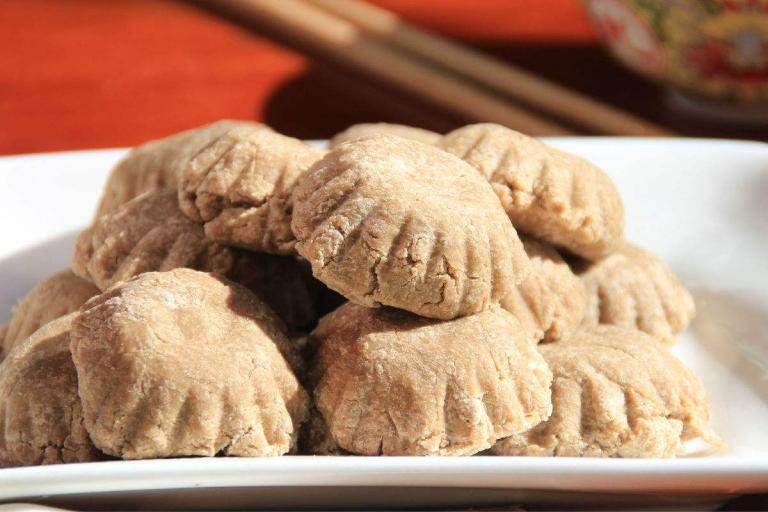
You can add and mix melted butter, brown sugar, cheese and cooked dough balls in the pot to create a delicious food called”Bazha Magu”that can be served both cold and hot. The dough balls in the shape of cats’ ears, as big as the fingertip the of index finger, are the best. Tibetan farmers prefer to make this delicacy with flour. Such a delicacy is soft, fragrant and sweet with a unique flavor.
Mixing zanba with butter and salty brick tea into a paste produces a delicacy named”Jiuma”. Jiuma”is easy to make. In cold winter, having hot and delicious Jiuma”when you come back home will make you feel satisfied and warm .
Cook hickory nut(a crimson earthnut of potentilla of similar size to a broad bean) and cooked rice until they are well done, and the the butter and brown sugar. This delicacy, combining white rice, red hickory nut, smooth butter and sweet sugar has a brilliant color and good favor.
Moreover, butter can also be used to make fried pasta food, which is ev better than rapeseed oil of the hinterland.
The refining process of butter is very poetic. From July to September when the grass is Hourishing, the water is clean and climate is pleasant, it’s the park season for plump cows to produce good milk and the golden time to refine high quality butter. In the vast grassland full of bright sunshine, fat cattle and sheepeat the grass leisurely. They look like dotted pearls and agate, or Hoating clouds, from a distance. The plateau is tranquil, quiet and beautiful and Tibetan women are refining butter and other dairy products at home or around their tents.
The refining process is commonly known as”beating butter”. The tools are imple, a butter barrel and a basin with a proper amount of water. The wooden butter barrel consists of three parts, (1)a chest-deep wooden barrel with one fifth of the barrel buried in a pit of similar diameter to the barrel. The whole barrel body is stright cylindrical and bound with a metal band, bamboo band, rattan hoop or leather hoop outside;(2)a”Jialuo, namely a plank whose diameter is a bit smaller than the interior of the barrel. There are five triangular or square holes on it. Four of the holes are uniformly distributed in the symmetrical parts of the plank and the center hole is fixed with a club about a foot high. In general, Jialuo”is always inserted in the barrel; and (3)a wooden cover of a diameter equal to the barrel’s external circumference. Several sticks are fixed on the wooden cover, making it more stable and to keep the barrel clean. Although butter barrels vary in size, they generally can contain 30-40 kg of milk.
Every morning and evening, women pour filtered fresh milk into the butter arrel to permit slight fermentation. They will add some warm water if the milk is badly fermented. Beating butter can be done by one woman, but it sometimes needs two if they are frail or old. To beat butter, they need to hold e wooden handle, exert their strength with their waist, arm and body to press the “Jialuo into the bottom of the barrel and then let go. The “Jialuo”will be raised up slowly by the buoyancy. They have to repeat these steps almost a thousand times to separate the oil from milk and allow it to float above. Then they carefully remove the oil and oil spot adhering to the barrel wall to a large bowl of cold water. They repeatedly knead the oil in the water until the impurities, i.e., the skim milk is removed. They then pat the butter into a Hat or square shape rrel of milk can be made into 1.5-3 kg of butter in summer. After much butter bar is accumulated, men will put it into soft calfskin or cattle tripe skin and sew them up for preservation and easy transportation .
Although beating butter is monotonous and boring work, it requires much skill and physical strength. You can imagine how much strength it needs to squeeze 40 kg of milk out from four holes and the gap between the barrel wall and the plank. I have also personally tried it. Although I held the wooden handle and exhausted all my strength, the”Jialuo”only sank slowly to the bottom of thebarrel. During my second attempt, a lot of milk poured out. It’s so hard to bear butter. However, naturally lively”Ajiala'”(an appellation of Tibetan women) can easily beat butter. They sing songs and dance when performing this job.
